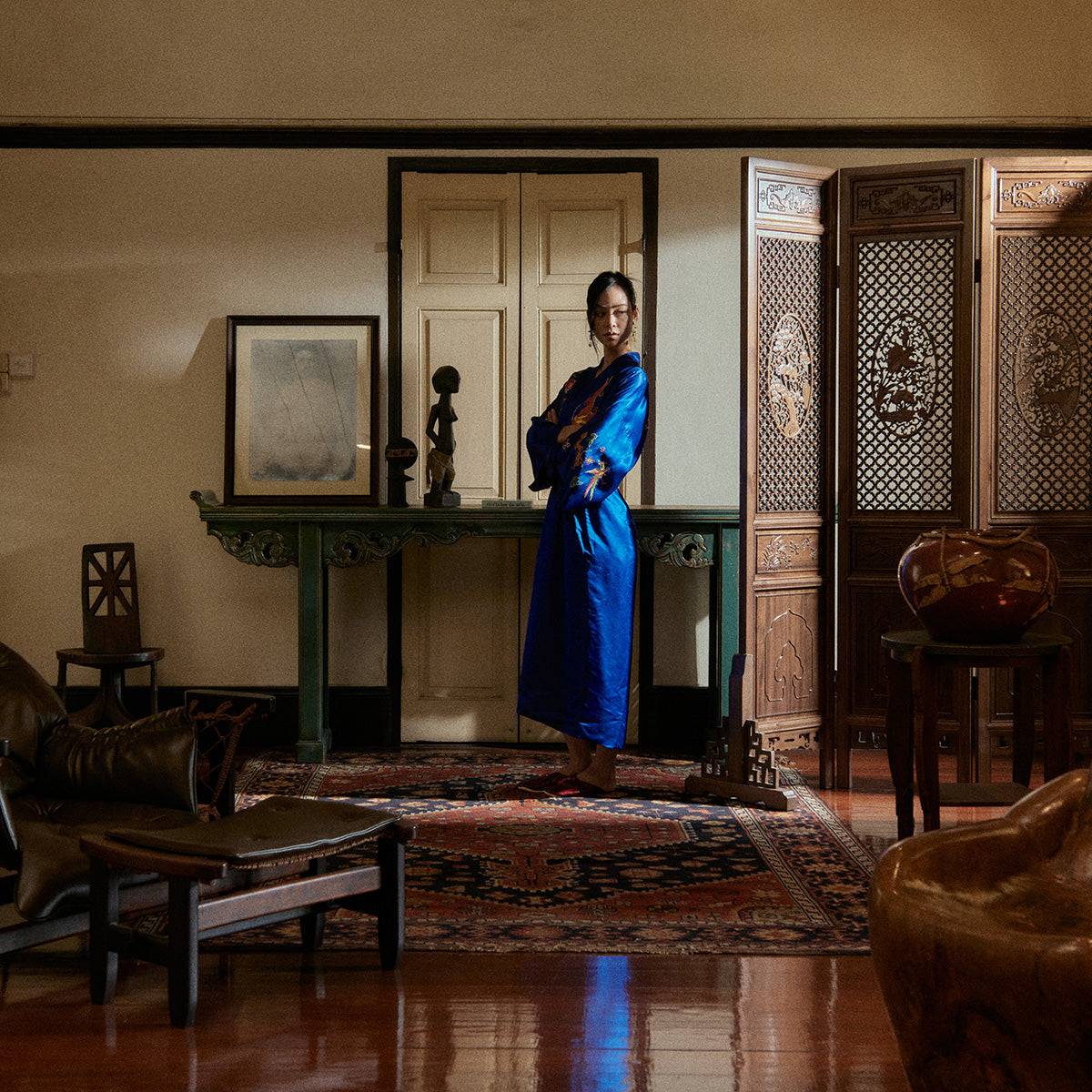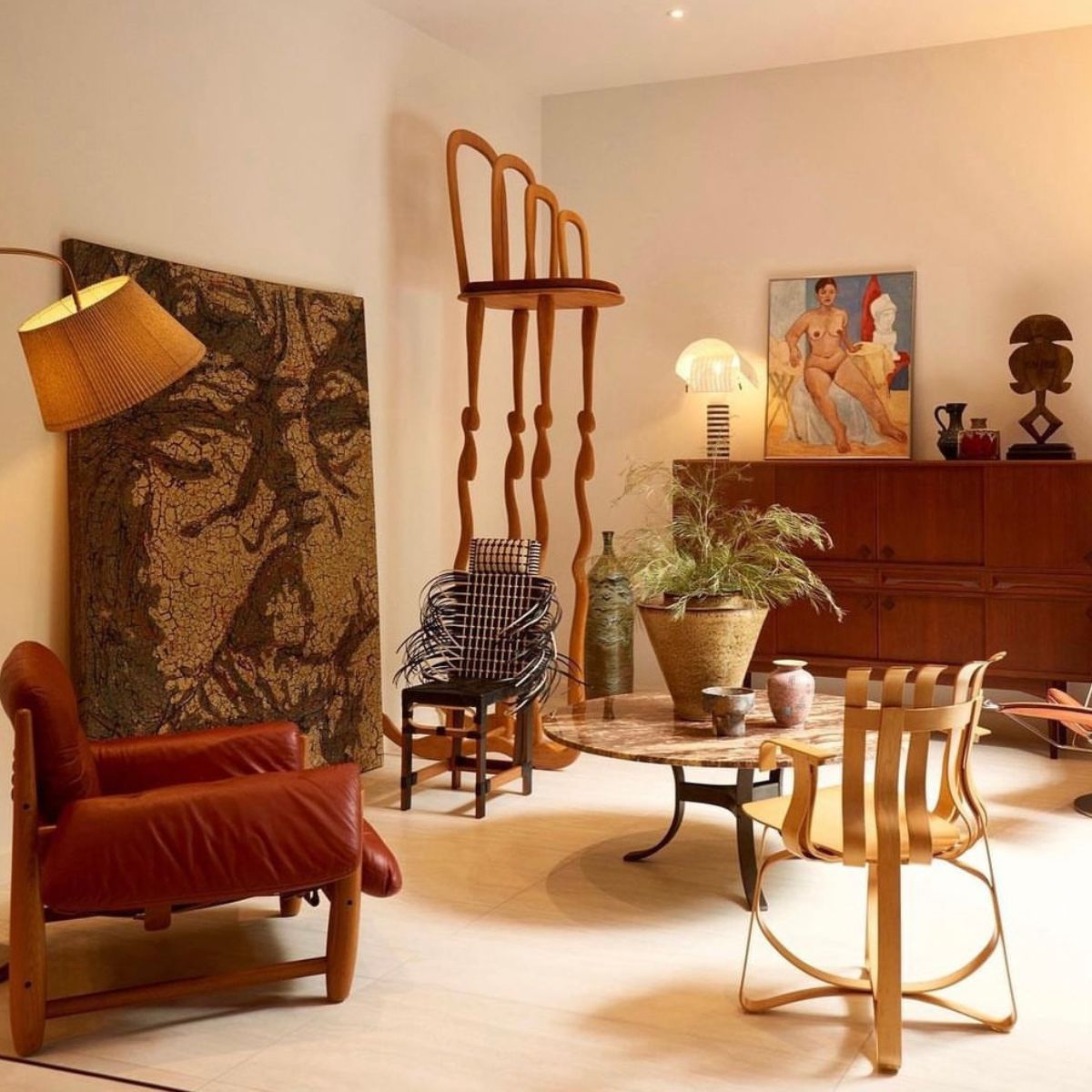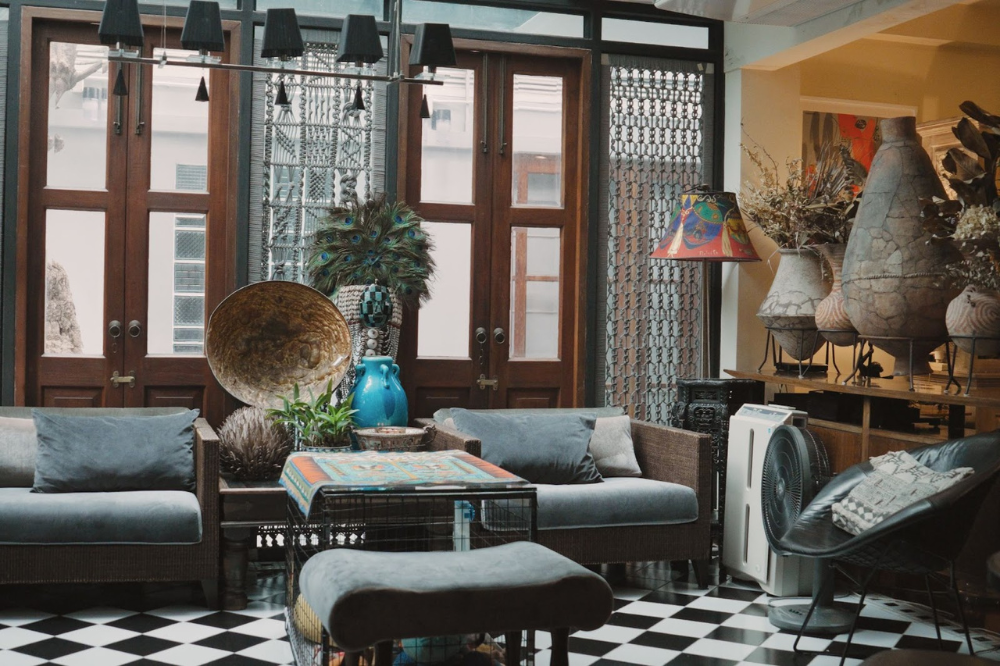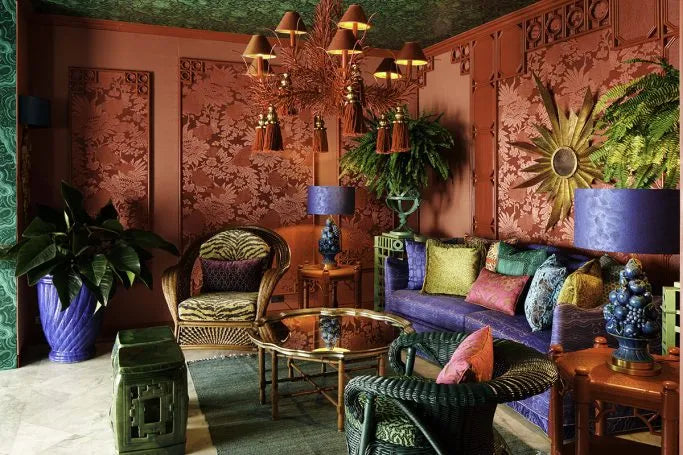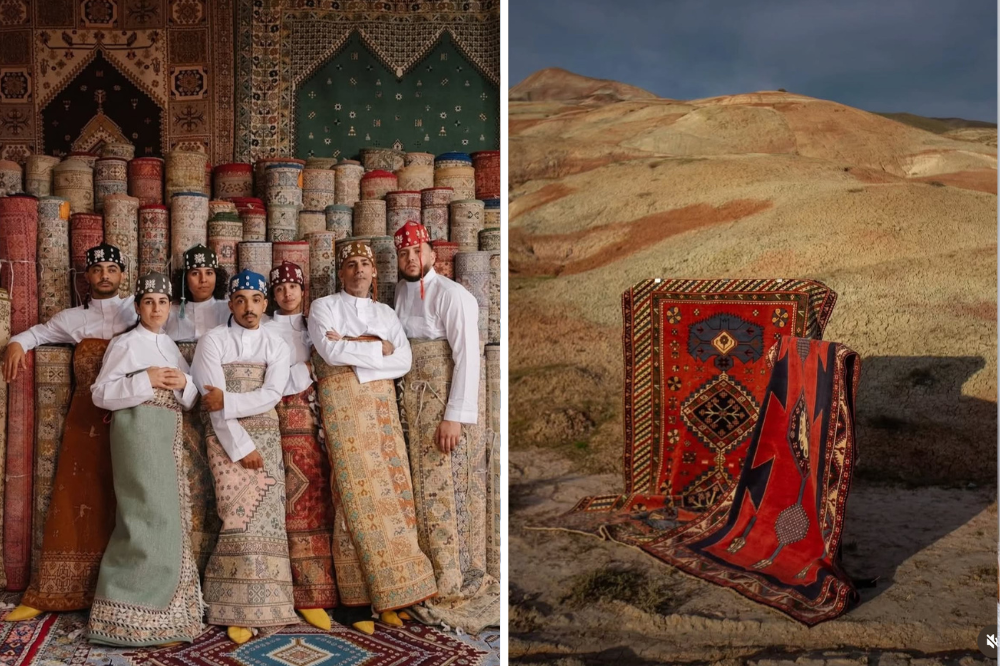Standing out? There’s an art to it, but it has to come from the right place. If it's through loud proclamations, then it all seems inauthentic. Through quiet confidence is where you shine the brightest because it's the kind of presence that draws eyes without asking, and lingers long after it’s gone. Attention-grabbing and deeply rooted in Thai identity is exactly how Pichita Maison makes its presence known.
The legacy begins with Pichitra (Jeab) Boonyarataphan, a second-generation designer in the family who initially never intended to follow in her mother’s footsteps, but inevitably carved out her path in the industry, all along the same thread.
Born in 1953, Jeab, the daughter of Lumyong Boonyarataphan, Thailand’s courtier and the founder of the Rapee Institution of Fashion, Jeab’s upbringing was never far from the world of fashion. The surname she holds is a lineage laced with expectations and opportunity; however, what Jeab made of it was entirely her own.
The tail end of the 20th century, in 1980, saw the establishment of Pichita, a fashion label that would later give rise to Pichita Maison, the brand’s expansion into home décor and lifestyle. Throughout its four and a half decade-long journey, the brand would not only adopt Thai craftsmanship as one of its core design signatures, but Pichita also set out to redefine Thainess in design.

Dressmaking as an Art
It would be a fool’s errand to simply label Pichita as a fashion label. The brand is a reflection of the philosophy in craft, whether in clothing or home decor. Their intention arguably has been cemented from the very dawn of their journey, which is to celebrate Thai artisanship in all its textured beauty, alongside influences from Jeab’s time abroad.
As a collector of home decor and as someone who frequented flea markets, Jeab believes that a house is simply just a square until you inject your sense of self. By simply rearranging your furniture and decor, you are able to redefine the space in its entirety. This belief also inspired her to design pieces for her friends, often in the form of custom embroidered napkin rings as gifts.

Above: Inside her home, the guest room is adorned with vintage collectibles thoughtfully juxtaposed with modern treasures.
Flea markets constituted a core memory of Jeab, who, during her studies in France, would buy vintage garments, reverse-engineer, and re-stitch them into something of her own. She didn’t know then that she would become the founder of one of Thailand’s most revered fashion houses, but importantly for her, she was doing exactly what she loved.
Her time in France ultimately helped shape her aesthetic sensibilities, as Jeab developed a lasting love for French-style tassels and antique decorative details, both elements that would later become a recurring visual motif across Pichita’s design and fashion outfits.
 Above: Pichita's personal collection of antique Benjarong porcelain
Above: Pichita's personal collection of antique Benjarong porcelain  Above: Silk Pillowcases - Thai Fairy Tales Print (Set of 2)
Above: Silk Pillowcases - Thai Fairy Tales Print (Set of 2)
Much like fashion, there is a story to be told with decor, and with each textile, placemat, or glass cover, Pichita weaves Thai heritage into expressions of what constitutes a home.
This element of Thai heritage is best showcased in some of their best-selling collections, such as placemats featuring hand-embroidered Tiger and elephant motifs, or a set of Thai Silk Napkin rings. There is a subtle sense of playfulness, almost as if a childlike joy is paired with their craftsmanship.
Think of it as all playfulness, then you might be mistaken, as certain pieces are a tribute to the stories that shaped their creation. In one example of Pichita’s home decor elements, the murals from the Vessantara Jataka, a Buddhist tale celebrating generosity, stand tall. It is these themes of Thai heritage and history in Buddhism that Pichita Maison matches in their designs, and reimagines via their own lens to create canvases that are alive and rich with stories.
The Language of Silk
 Above: Pichita’s ethereal dress made from cicada wings, an in-house favourite, surrounded by hand-embroidered beads delicately adorning Thai silk fabric
Above: Pichita’s ethereal dress made from cicada wings, an in-house favourite, surrounded by hand-embroidered beads delicately adorning Thai silk fabric
Out of all the materials that define Pichita, few are as influential as Thai silk, which represents identity, challenge, and preservation all at once. The material is delicate, difficult, and mistakes are easy to spot, but there must be a reason why she chooses it again and again.
The love for Thai silk, in Pichita’s eyes, is born out of respect for the artisans and the regional identities that are prevalent within each strand. Each corner of the Kingdom possesses its techniques in weaving and textures. And for Pichita Maison, these difference emerges more as possibilities, rather than obstacles.
To work with the differences, and combine them into a single garment or design, often with printing patterns onto the silk, showcases the fibre of Pichita. That is to make use of existing craftsmanship and reinterpret it through Pichita’s vision.
A great example is Pichita’s ethereal dress made from cicada wings, an in-house favourite, which Jeab first encountered through Queen Sirikit’s royal textile initiative. Despite their fragility and difficulty in working with, cicada wings can last over a century. Perhaps this is the perfect metaphor of Pichita’s pursuit of beauty.
A New Generation
 (Above left): Hand-Embroidered Glass Cover - Set of 6
(Above left): Hand-Embroidered Glass Cover - Set of 6
(Above Right): Thai Silk Napkin Ring - Set of 6
If Jeab had laid the foundations of Pichita, it is perhaps her daughter, Tatim (Kanomjang) Rucksajit, who is building out its walls. First introduced to Pichita through the 2018 Spring/Summer collection titled ‘Where It All Began’, the collection draws inspiration from Pichita’s early collections.
While a revival of past silhouettes was clear, equally as important was the move to adjust the notions of the past for a new era. With Tatim now a prominent part of Pichita Maison, her mission is now focused on making the brand more accessible and wearable for the newer generation, while never compromising on what truly makes Pichita, Pichita.
Mirroring her mother, a similar mindset extends into the home. Tatim sees home decor and furnishings as an extension of fashion, another way to evoke emotion, warmth and identity.
Tatim recalls waking up each Sunday to a living room entirely rearranged, a move that would later be described as characteristic of her mother. The ever-curious instinct to continue to reinterpret a space that constructs a home, ultimately instilled a sense of design, similarly to her mother, in Tatim.
Today, her goal is to expand the idea of home even further by exploring new product categories such as tableware and furniture. But at her very core, and that of Pichita, the soul steadfastly remains with textiles.
A Distinct Language

Algorithmic design and mass production, both elements that define the modern world, do not apply to Pichita Maison, which continues to opt for the slower route time and time again. The route that listens, observes, and responds with care.
Hand-stitched embroidery, patchwork, natural dyes, and tassels are a testament to Pichita’s ethos. It is the sense of meaning that continues to set the brand apart from the influences of the modern world.
The slower route to fashion demonstrates love and continues to constitute a large part of Pichita’s DNA. Not only does the brand stand as a tribute to its founding matriarch, but more crucially, they are a canvas for future generations.
What initially began as guidance and training under the watchful eyes of Nina Ricci has now expanded into a lifestyle, a way of living where beauty and heritage are paramount. Fashion may have been a starting point, but today, home is where the heart of Pichita truly lives.
If you are curious to see just how tradition and design intertwine, you might just want to explore where Pichita Maison now calls home, over at Surround Living.
